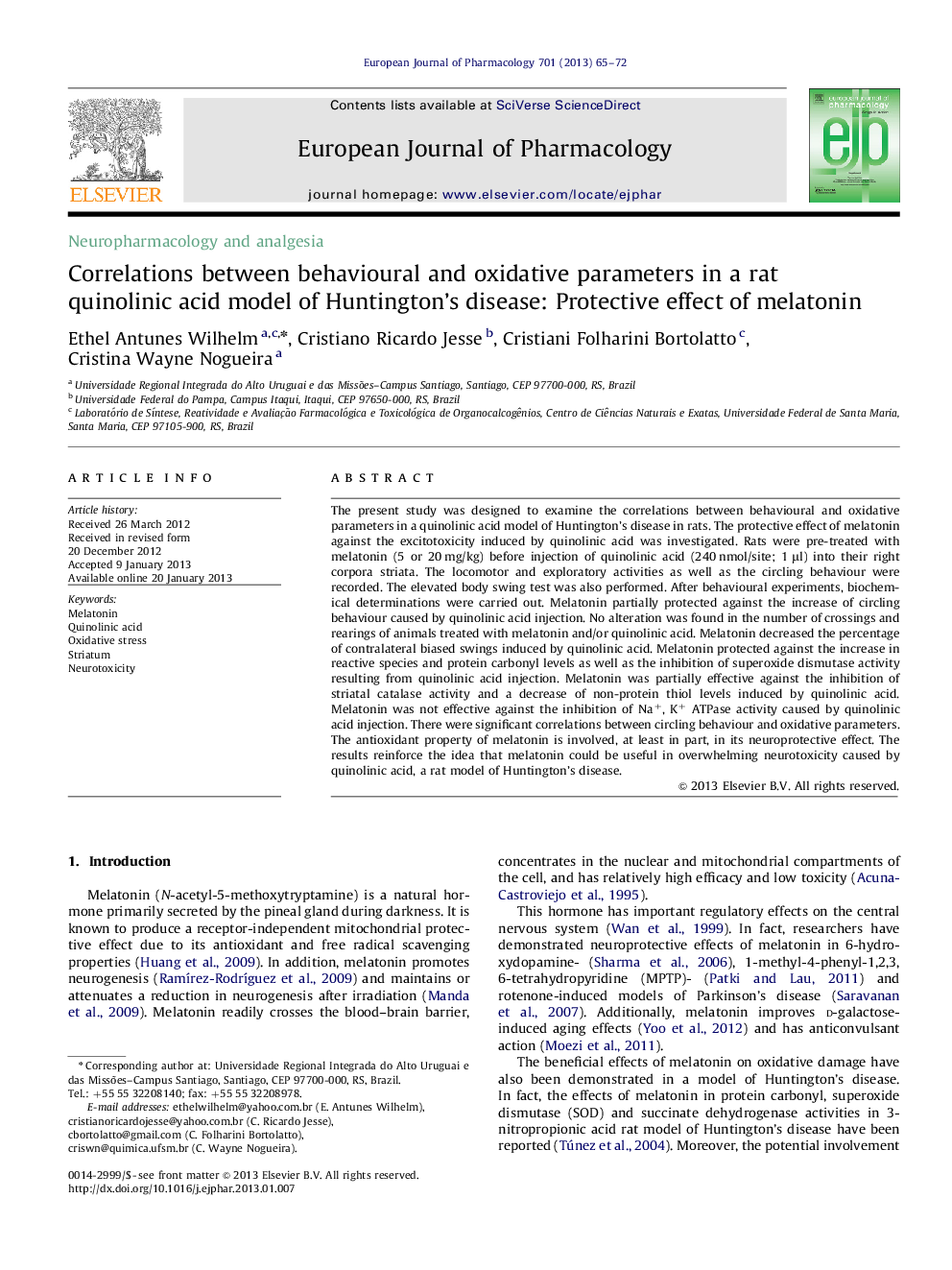| کد مقاله | کد نشریه | سال انتشار | مقاله انگلیسی | نسخه تمام متن |
|---|---|---|---|---|
| 5828791 | 1558980 | 2013 | 8 صفحه PDF | دانلود رایگان |
عنوان انگلیسی مقاله ISI
Correlations between behavioural and oxidative parameters in a rat quinolinic acid model of Huntington's disease: Protective effect of melatonin
ترجمه فارسی عنوان
همبستگی بین پارامترهای رفتاری و اکسیداتیو در یک مدل اسید کینولینیک اسید هانتینگتون: اثر حفاظتی ملاتونین
دانلود مقاله + سفارش ترجمه
دانلود مقاله ISI انگلیسی
رایگان برای ایرانیان
کلمات کلیدی
موضوعات مرتبط
علوم زیستی و بیوفناوری
علم عصب شناسی
علوم اعصاب سلولی و مولکولی
چکیده انگلیسی
The present study was designed to examine the correlations between behavioural and oxidative parameters in a quinolinic acid model of Huntington's disease in rats. The protective effect of melatonin against the excitotoxicity induced by quinolinic acid was investigated. Rats were pre-treated with melatonin (5 or 20 mg/kg) before injection of quinolinic acid (240 nmol/site; 1 μl) into their right corpora striata. The locomotor and exploratory activities as well as the circling behaviour were recorded. The elevated body swing test was also performed. After behavioural experiments, biochemical determinations were carried out. Melatonin partially protected against the increase of circling behaviour caused by quinolinic acid injection. No alteration was found in the number of crossings and rearings of animals treated with melatonin and/or quinolinic acid. Melatonin decreased the percentage of contralateral biased swings induced by quinolinic acid. Melatonin protected against the increase in reactive species and protein carbonyl levels as well as the inhibition of superoxide dismutase activity resulting from quinolinic acid injection. Melatonin was partially effective against the inhibition of striatal catalase activity and a decrease of non-protein thiol levels induced by quinolinic acid. Melatonin was not effective against the inhibition of Na+, K+ ATPase activity caused by quinolinic acid injection. There were significant correlations between circling behaviour and oxidative parameters. The antioxidant property of melatonin is involved, at least in part, in its neuroprotective effect. The results reinforce the idea that melatonin could be useful in overwhelming neurotoxicity caused by quinolinic acid, a rat model of Huntington's disease.
ناشر
Database: Elsevier - ScienceDirect (ساینس دایرکت)
Journal: European Journal of Pharmacology - Volume 701, Issues 1â3, 15 February 2013, Pages 65-72
Journal: European Journal of Pharmacology - Volume 701, Issues 1â3, 15 February 2013, Pages 65-72
نویسندگان
Ethel Antunes Wilhelm, Cristiano Ricardo Jesse, Cristiani Folharini Bortolatto, Cristina Wayne Nogueira,
